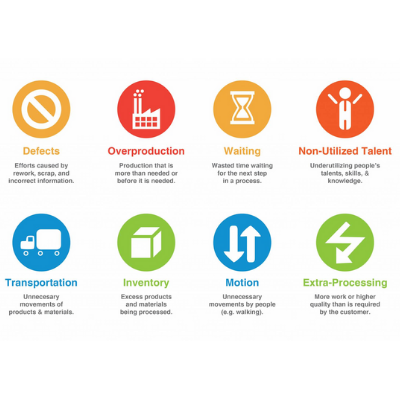Contact Information
info@leanconstructionblog.com
Related Webinars
all webinarsThe Concept of Waste and Value in Lean
A common definition of “Lean”-anything (construction, manufacturing, operations, etc.) is that “Lean” is an operations strategy to increase value and eliminate waste. Simple, right? This is the first installment of a multi-post explanation of how Lean defines and addresses “waste”.
Understanding the 7… No, 8… No, 10 Forms of Wastes
This second installment of a three-post series explains how Lean defines and addresses “waste”. This post examines the Japanese concepts of “Muda, Mura and Muri”, attributed originally to the brilliance of Taiichi Ohno and the Toyota Production System (TPS).

Waste Walk : How to Identify Waste
How do we develop our ability to identify waste, ascertain its causes and implement a lasting correction? In order to identify waste in our operations, we need to See what we are looking at differently using a new set of Lean lenses.

Applying Lean to reduce rework in the housing supply chain
The UK housing supply chain has often been criticised for the poor quality of its products, low level of productivity and high level of waste. The problem of poor supply and quality has successfully been tackled by automobile manufacturing industries.
How to Reduce Construction Rework Costs
At the turn of the century, Sir John Egan published ‘Rethinking Construction’, highlighting the urgent need to address spiraling Construction costs, schedules, and defects. Several high profile reports have since reiterated this criticism.
Time Waste on Construction Sites
Ohno applies three categories that work activities can fall into. Direct Work is the value-adding installation and transformation. Then there is a lot of preparatory work, which Ohno calls for Non-Value-Adding Work.

Comparison of Sources of Waste between Construction and Manufacturing Industries
Prior research has investigated the sources of waste in order to gain better understanding of waste in production systems and to promote the use of lean methods [1].

The Concept of Waste as Understood in Lean Construction
The construction industry is seen, by researchers, as a slowly progressing industry that is suffering from low productivity and poor performance compared to other industries.
How to identify root causes of low construction labor productivity
The labor productivity of construction projects is low. This urges construction companies to increase their labor efficiency, particularly when demands grow and labor is scarce.
The Different Types of Waste in the Construction Industry
In this article, I will explain the different types of waste in the construction industry by giving examples of my own experience, discuss how lean principles can enable their systematic elimination, and give recent examples of lean principles currently in play.

Breaking Through the Variation Barrier
Have you been on a project where workers are standing around with nothing to do or areas on your project ready to go with nobody around and all you hear are crickets chirping? This is caused by variation in production which simply means you have inconsistent processes.

The Ratio of Value vs. Waste in Brazilian Infrastructure Projects
Brazil’s public and private infrastructure sector is investing in processes improvement and kaizen implementation. Included in this investment is a study of the of ratio of value added vs. non-value added activities on site.
What is Digital Waste and How to Get Rid of It?
Removing digital waste begins by identifying it. Digital waste is the quantifiable negative impact of inefficient processes and lack of secure data interoperability between systems within the project delivery ecosystem.

Achieving Lean With Cloud and Mobile Technologies
In many ways, lean construction is about ensuring the right people receive the right information at the right time. Cloud and mobile technologies can greatly facilitate these goals. By storing information in the cloud, a construction team gains a single source that connects all the project data.
Inclusion: Transforming Non-Used Talent
We focus on time frames, deadlines, schedules, milestones, influencers, important stakeholders, and so on. These business realities are incredibly important and help drive decisions needed to address concerns and progress.

7 Challenges That The Construction Industry Faces and How Lean Construction Can Help
Despite the importance of construction in our lives and the global economy, the traditional construction system still has several shortcomings. There are 7 main challenges facing the construction industry nowadays.
.png)
What is Non-Value for Future Productivity
The target of lean management is a value stream. Lean management aims to reduce waste and create a value stream that includes only value. A value stream consists of value and non-value process steps.

Avoid Lean Construction; why?
Lean Construction (LC) categorizes the project’s activities as Value-Added (VA) activities and Non-Value-Added (NAV) activities. The second category has eight different types: 1) Rework; 2) Overproduction; 3) Transportation; 4) Inventory; 5) Waiting; 6) Over-processing; 7) Unnecessary Movement; and 8) Non-Utilized Talent [1-8].

Construction’s 9th Waste – Conflict!
As Construction companies throughout the US and Canada focus on implementing Lean Construction methods to reduce Lean’s 8 wastes, more focus is needed on the construction industry’s 9th waste – Conflict!

Clean up Your Muda: How Automation Can Remove the Gray Work of Construction
That inability to find a job order, materials list or other key pieces of information is – unfortunately - a common scenario on job sites and in projects all over. While it's impossible to completely eliminate lost time or project delays, it’s becoming more possible to reduce the frustration and expense of jobsite downtime.


